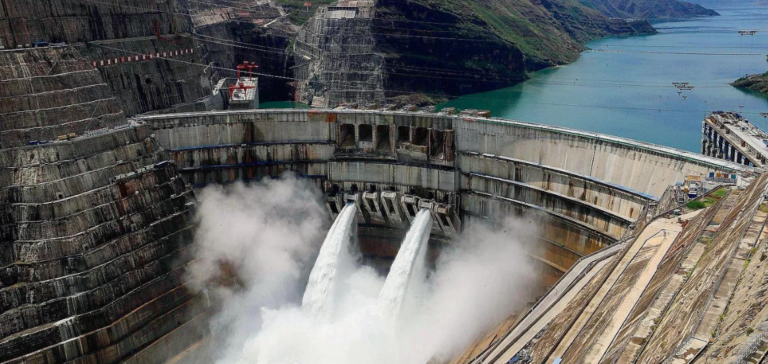Hydroelectric capacity in Central Asia is set to grow significantly over the next few years. Nikolai Podguzov, Chairman of the Board of Directors of the Eurasian Development Bank (EDB), recently announced at the World Hydropower Congress in Bali, a projected increase of 8,900MW by 2035. Moreover, this expansion comes as the region prepares for a prolonged water shortage crisis, expected between 2028 and 2029, with an estimated annual deficit of between 5 and 12 km³.
Preparing for the water shortage crisis
Hydropower plays a crucial role in the region, serving not only as a source of electricity but also in regulating river run-off for irrigation. However, Podguzov stressed the region’s commitment to attracting investment for the multiple use of water resources, focusing on the development of hydroelectric power plants and irrigation systems.
Vital role of hydropower for electricity and irrigation
“Considerable efforts are being made to create a favorable environment for investment in the modernization of existing hydropower plants and the construction of new ones, as well as in the development of irrigation systems in the region.”
said Podguzov. He highlighted the dual benefits of mitigating the impact of climate change and guaranteeing economic and social stability.
Investments and modernization of hydroelectric power plants
According to Podguzov, Central Asia is one of the few regions in the world where hydroelectric potential remains underdeveloped, with less than 25% currently exploited. However, more than 80 hydropower plants with a total installed capacity of around 14,000MW operate in the region.
“By 2035, we plan to increase this capacity by 8,900MW through modernization and new construction.”
he revealed.
Key projects in the Kyrgyz Republic and Tajikistan
Notable projects include the 1860MW Kambaratinskaya hydropower plant in the Kyrgyz Republic and the 3600MW Rogunskaya project in Tajikistan. As a regional development bank, EDB plans to invest more than $400 million in the Central Asian water and energy complex over the next three years. This year, EDB initiated financing for the 100MW Kulanak hydropower plant in the Kyrgyz Republic and is actively involved in negotiations for the financing of other major projects, including Kambaratinskaya and Rogunskaya.
EDB’s role in the development of the water and energy complex
“As the financial partner for these projects, we provide a full range of tools for investment in the development of the water and energy complex. This includes issuing long-term loans and green bonds, attracting funds from various financial organizations and private investors, and offering technical assistance for project documentation.”
said Podguzov, encouraging all interested investors to collaborate in the preparation, financing and implementation of projects focused on the construction and modernization of hydroelectric power plants in EDB member countries.
Central Asia’s initiative to develop its hydroelectric potential, in the face of the water shortage crisis and climate challenges, is opening up new avenues for sustainable investment. This marks a crucial turning point for regional energy and agriculture, underlining the importance of innovation and international collaboration.






















